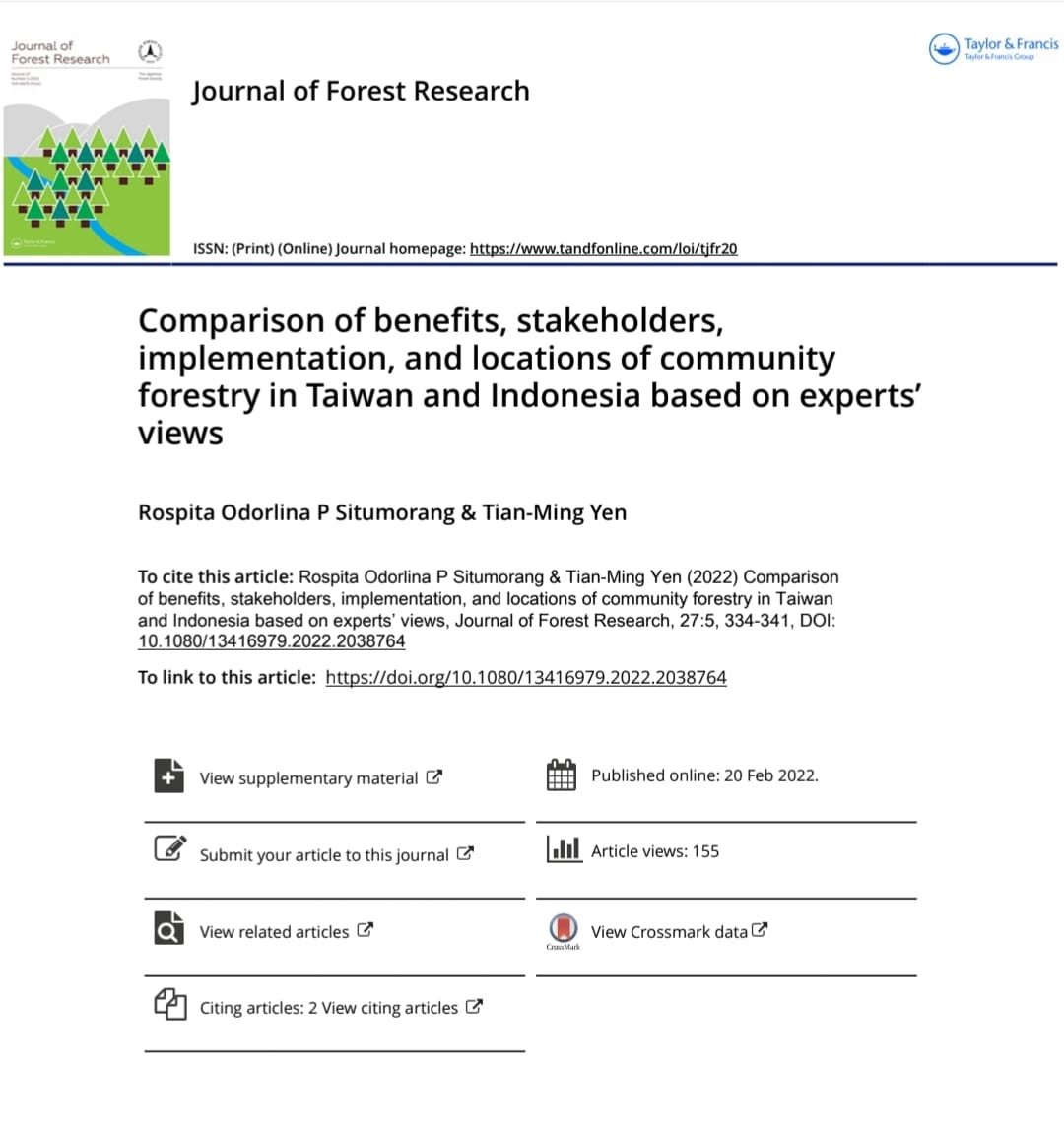Rospita Odorlina P Situmorang &
Pages 334-341 | Received 22 Apr 2021, Accepted 01 Feb 2022, Published online: 20 Feb 2022
ABSTRACT
This study compares the benefits, stakeholders, program implementation, and locations of community forestry (CF) programs in Taiwan and Indonesia based on expert views. An online survey was submitted to 49 experts between December 2019 and January 2020. We evaluated CF benefits, stakeholder roles, and available programs in both countries using the Friedman and Hollander–Wolfe tests. Concerning benefits, Taiwan and Indonesia differed considerably, in that environmental, economic, and social benefits of CF in Taiwan were all assigned equal values. However, in Indonesia, economic benefits (R = 55.0) had the highest score. Regarding stakeholders’ contributions, community organizations (R = 99.5) constituted the highest contribution in Taiwan, while the government (R = 79.5) was the dominant stakeholder in Indonesia. The government mostly contributed by providing financial support (R = 67.5) for community organization development in Taiwan, while in Indonesia, it focused on devolving forestland and forest resources (R = 61.0) to communities. The contributions of non-governmental organizations in facilitating CF were the same in Taiwan and Indonesia. In terms of the available programs, Taiwan and Indonesia also differed, indicated by the community participation motives that were equally important to increase income, protect forests, and conserve biodiversity and ecosystem in Taiwan, whereas in Indonesia, increasing income (R = 63.0) was the most important to communities. For community development programs, ecotourism (R = 51.5) is more influential than product industry development in Taiwan, while in Indonesia, they were equally influential. CF implementation in Taiwan was more likely located in mountainous areas, while CFs were situated throughout Indonesia.
KEYWORDS:

